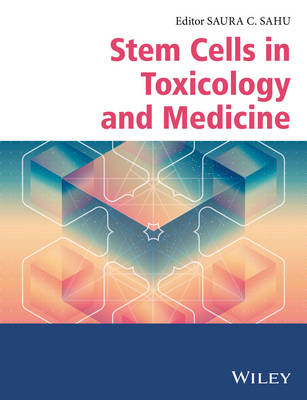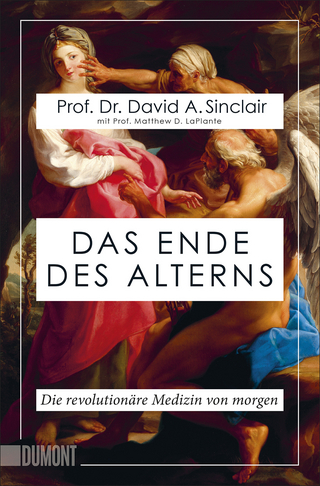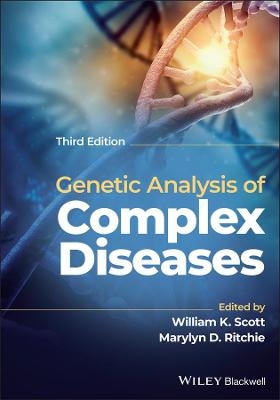
Stem Cells in Toxicology and Medicine
John Wiley & Sons Inc (Verlag)
978-1-119-13541-8 (ISBN)
- Titel z.Zt. nicht lieferbar
- Versandkostenfrei innerhalb Deutschlands
- Auch auf Rechnung
- Verfügbarkeit in der Filiale vor Ort prüfen
- Artikel merken
Presented by internationally recognized investigators in this exciting field of scientific research
Provides an insight into the current trends and future directions of research in this rapidly developing new field
A valuable and excellent source of authoritative and up-to-date information for researchers, toxicologists, drug industry, risk assessors and regulators in academia, industry and government
Dr. Saura C. Sahu Research Chemist, Division of Toxicology, Office of Applied Research and Safety Assessment, Center for Food Safety and Applied Nutrition, US Food and Drug Administration. Dr. Sahu is the US Editor for the Journal of Applied Toxicology and the editor of “Hepatotoxicity” (Wiley, 2007), “Toxicogenomics” (Wiley, 2008), “Nanotoxicity” (Wiley, 2009), and “Handbook of Systems Toxicology” (Wiley, 2011).
List of Contributors xx
Preface xxvi
Acknowledgements xxvii
PART I 1
1 Introduction 3
Saura C. Sahu
References 4
2 Application of Stem Cells and iPS Cells in Toxicology 5
Maria Virginia Caballero, Ramon A. Espinoza‐Lewis, and Manila Candiracci
2.1 Introduction 5
2.2 Significance 6
2.3 Stem Cell (SC) Classification 7
2.4 Stem Cells and Pharmacotoxicological Screenings 8
2.5 Industrial Utilization Showcases Stem Cell Technology as a Research Tool 8
2.6 Multipotent Stem Cells (Adult Stem Cells) Characteristics and Current Uses 9
2.7 Mesenchymal Stem Cells (Adult Stem Cells) 10
2.8 Hematopoietic Stem Cells (Adult Stem Cells) 11
2.9 Cardiotoxicity 12
2.10 Hepatotoxicity 15
2.11 Epigenetic Profile 17
2.12 Use of SC and iPSC in Drug Safety 18
2.13 Conclusions and Future Applications 19
Acknowledgments 19
References 19
3 Stem Cells: A Potential Source for High Throughput Screening in Toxicology 26
Harish K Handral, Gopu Sriram, and Tong Cao
3.1 Introduction 26
3.2 Stem Cells 27
3.3 High Throughput Screening (HTS) 31
3.4 Need for a Stem Cell Approach in High Throughput Toxicity Studies 37
3.5 Role of Stem Cells in High Throughput Screening for Toxicity Prediction 38
3.6 Conclusion 40
Acknowledgement 41
Disclosure Statement 41
Author’s Contribution 41
References 41
4 Human Pluripotent Stem Cells for Toxicological Screening 50
Lili Du and Dunjin Chen
4.1 Introduction 50
4.2 The Biological Characteristics of hPSCs 51
4.3 Screening of Embryotoxic Effects using hPSCs 52
4.4 The Potential of hPSC‐Derived Neural Lineages in Neurotoxicology 55
4.5 The Potential of hPSC ‐Derived Cardiomyocytes in Cardiotoxicity 60
4.6 The Potential of hPSC‐Derived Hepatocytes in Hepatotoxicity 62
4.7 Future Challenges and Perspectives for Embryotoxicity and Developmental Toxicity Studies using hPSCs 65
Acknowledgments 66
References 67
5 Effects of Culture Conditions on Maturation of Stem Cell‐Derived Cardiomyocytes 71
Deborah K. Hansen, Amy L. Inselman, and Xi Yang
5.1 Introduction 71
5.2 Lengthening Culture Time 75
5.3 Substrate Stiffness 76
5.4 Structured Substrates 78
5.5 Conclusions 82
Disclaimer 82
References 83
6 Human Stem Cell‐Derived Cardiomyocyte In Vitro Models for Cardiotoxicity Screening 85
Tracy Walker, Kate Harris, Evie Maifoshie, and Khuram Chaudhary
6.1 Introduction 85
6.2 Overview of hPSC‐Derived Cardiomyocytes 88
6.3 Human PSC‐CM Models for Cardiotoxicity Investigations 90
6.4 Conclusions and Future Direction 112
References 112
7 Disease‐Specific Stem Cell Models for Toxicological Screenings and Drug Development 122
Matthias Jung, Juliane‐Susanne Jung, Jovita Schiller, and Insa S. Schroeder
7.1 Evidence for Stem Cell‐Based Drug Development and Toxicological Screenings in Psychiatric Diseases, Cardiovascular Diseases and Diabetes 122
7.2 Disease‐Specific Stem Cell Models for Drug Development in Psychiatric Disorders 127
7.3 Stem Cell Models for Cardiotoxicity and Cardiovascular Disorders 132
7.4 Stem Cell Models for Toxicological Screenings of EDCs 133
References 135
8 Three‐Dimensional Culture Systems and Humanized Liver Models Using Hepatic Stem Cells for Enhanced Toxicity Assessment 145
Ran‐Ran Zhang, Yun‐Wen Zheng, and Hideki Taniguchi
8.1 Introduction 145
8.2 Hepatic Cell Lines and Primary Human Hepatocytes 146
8.3 Embryonic Stem Cells and Induced Pluripotent Stem‐Cell Derived Hepatocytes 147
8.4 Ex Vivo: Three‐Dimensional and Multiple‐Cell Culture System 148
8.5 In Vivo: Humanized Liver Models 149
8.6 Summary 150
Acknowledgments 150
References 150
9 Utilization of In Vitro Neurotoxicity Models in Pre‐Clinical Toxicity Assessment 155
Karin Staflin, Dinah Misner, and Donna Dambach
9.1 Introduction 155
9.2 Current Models of Drug‐Related Clinical Neuropathies and Effects on Electrophysiological Function 159
9.3 Cell Types that Can Potentially Be Used for In Vitro Neurotoxicity Assessment in Drug Development 162
9.4 Utility of iPSC Derived Neurons in In Vitro Safety Assessment 167
9.5 Summary of Key Points for Consideration in Neurotoxicity Assay Development 170
9.6 Concluding Remarks 172
References 172
10 A Human Stem Cell Model for Creating Placental Syncytiotrophoblast, the Major Cellular Barrier that Limits Fetal Exposure to Xenobiotics 179
R. Michael Roberts, Shinichiro Yabe, Ying Yang, and Toshihiko Ezashi
10.1 Introduction 179
10.2 General Features of Placental Structure 180
10.3 The Human Placenta 180
10.4 Human Placental Cells in Toxicology Research 182
10.5 Placental Trophoblast Derived from hESC 183
10.6 Isolation of Syncytial Areas from BAP‐Treated H1 ESC Colonies 185
10.7 Developmental Regulation of Genes Encoding Proteins Potentially Involved in Metabolism of Xenobiotics 185
10.8 Concluding Remarks 191
Acknowledgments 192
References 192
11 The Effects of Endocrine Disruptors on Mesenchymal Stem Cells 196
Marjorie E. Bateman, Amy L. Strong, John McLachlan, Matthew E. Burow, and Bruce A. Bunnell
11.1 Mesenchymal Stem Cells 196
11.2 Endocrine Disruptors 198
11.3 Pesticides 201
11.4 Alkyl Phenols and Derivatives 206
11.5 Bisphenol A 211
11.6 Polychlorinated Biphenyls 216
11.7 Phthalates 221
11.8 Areas for Future Research 225
11.9 Conclusions 226
Abbreviations 226
References 228
12 Epigenetic Landscape in Embryonic Stem Cells 238
Xiaonan Sun, Nicholas Spellmon, Joshua Holcomb, Wen Xue, Chunying Li, and Zhe Yang
12.1 Introduction 238
12.2 DNA Methylation in ESCs 239
12.3 Histone Methylation in ESCs 240
12.4 Chromatin Remodeling and ESCs Regulation 241
12.5 Concluding Remarks 242
Acknowledgements 243
References 243
PART II 247
13 The Effect of Human Pluripotent Stem Cell Platforms on Preclinical Drug Development 249
Kevin G. Chen
13.1 Introduction 249
13.2 Core Signaling Pathways Underlying hPSC Stemness and Differentiation 250
13.3 Basic Components of In Vitro and Ex Vivo hPSC Platforms 251
13.4 Diverse hPSC Culture Platforms for Drug Discovery 252
13.5 Representative Analyses of hPSC‐Based Drug Discovery 255
13.6 Current Challenges and Future Considerations 257
13.7 Concluding Remarks 260
Acknowledgments 260
References 260
14 Generation and Application of 3D Culture Systems in Human Drug Discovery and Medicine 265
H. Rashidi and D.C. Hay
14.1 Introduction 265
14.2 Traditional Scaffold‐Based Tissue Engineering 266
14.3 Scaffold‐Free 3D Culture Systems 269
14.4 Modular Biofabrication 270
14.5 3D Bioprinting 270
14.6 Tissue Modelling and Regenerative Medicine Applications of Pluripotent Stem Cells 272
14.7 Applications in Drug Discovery and Toxicity 275
14.8 Conclusions 278
References 278
15 Characterization and Therapeutic Uses of Adult Mesenchymal Stem Cells 288
Juliann G. Kiang
15.1 Introduction 288
15.2 MSC Characterization 289
15.3 MSCs and Tissue or Organ Therapy 293
15.4 Conclusions 298
Acknowledgments 298
References 298
16 Stem Cell Therapeutics for Cardiovascular Diseases 303
Yuning Hou, Xiaoqing Guan, Shukkur M. Farooq, Xiaonan Sun, Peijun Wang, Zhe Yang,
and Chunying Li
16.1 Introduction 303
16.2 Types of Stem/Progenitor Cell‐Derived Endothelial Cells 304
16.3 EPC and Other Stem/Progenitor Cell Therapy in CVDs 306
16.4 Strategies and Approaches for Enhancing EPC Therapy in CVDs 306
16.5 Concluding Remarks 315
Acknowledgments 316
References 316
17 Stem‐Cell‐Based Therapies for Vascular Regeneration in Peripheral Artery Diseases 324
David M Smadja and Jean‐Sébastien Silvestre
17.1 Sources of Stem Cells for Vascular Regeneration 325
17.2 Canonic Mechanisms Governing Vascular Stem Cells Therapeutic Potential 329
17.3 Stem‐Cell‐Based Therapies in Patients with Peripheral Artery Disease 333
References 337
18 Gene Modified Stem/Progenitor‐Cell Therapy for Ischemic Stroke 347
Yaning Li, Guo‐Yuan Yang, and Yongting Wang
18.1 Introduction 347
18.2 Gene Modified Stem Cells for Ischemic Stroke 348
18.3 Gene Transfer Vectors 354
18.4 Unsolved Issues for Gene‐Modified Stem Cells in Ischemic Stroke 356
18.5 Conclusion 356
Abbreviations 356
Acknowledgments 357
References 357
19 Role of Stem Cells in the Gastrointestinal Tract and in the Development of Cancer 363
Pengyu Huang, Bin Li, and Yun‐Wen Zheng
19.1 Introduction 363
19.2 GI Development and Regeneration 365
19.3 GI Tumorigenesis and Stemness Gene Expression 367
19.4 Toxicants and Other Stress Trigger Epigenetic Changes, Dedifferentiation, and Carcinogenesis 368
19.5 Summary and Perspective 369
Acknowledgments 369
References 370
20 Cancer Stem Cells: Concept, Significance, and Management 375
Haseeb Zubair, Shafquat Azim, Sanjeev K. Srivastava, Arun Bhardwaj, Saravanakumar Marimuthu, Mary C. Patton, Seema Singh, and Ajay P. Singh
20.1 Introduction 375
20.2 Stem Cells and Cancer: Historical Perspective 376
20.3 Cancer Stem Cells 377
20.4 Identification and Isolation of CSCs 382
20.5 Pathological Significance of Cancer Stem Cells 388
20.6 Pathways Regulating Cancer Stem Cells 389
20.7 Therapeutic Strategies Targeting Cancer Stem Cells 394
20.8 Conclusion and Future Directions 399
References 400
21 Stem Cell Signaling in the Heterogeneous Development of Medulloblastoma 414
Joanna Triscott and Sandra E. Dunn
21.1 Brain Tumor Cancer Stem Cells 414
21.2 Medulloblastoma 416
21.3 Hijacking Cerebellar Development 417
21.4 Molecular Classification of MB 420
21.5 Mouse Models and Cell of Origin 424
21.6 Additional Drivers of MB 425
21.7 Repurposing Off‐Patent Drugs 426
21.8 Emerging Therapies for MB 428
21.9 Conclusion 429
Acknowledgments 429
References 429
22 Induced Pluripotent Stem Cell‐Derived Outer-Blood‐Retinal Barrier for Disease Modeling and Drug Discovery 436
Jun Jeon, Nathan Hotaling, and Kapil Bharti
22.1 Introduction 436
22.2 The Outer Blood‐Retinal Barrier 437
22.3 iPSC‐Based Model of the Outer-Blood‐Retinal-Barrier 439
22.4 iPSC Based OBRB Disease Models 442
22.5 Applications of iPSC‐Based Ocular Disease Models for Drug Discovery 448
22.6 Conclusion and Future Directions 451
References 451
23 Important Considerations in the Therapeutic Application of Stem Cells in Bone
Healing and Regeneration 458
Hoda Elkhenany, Shawn Bourdo, Alexandru Biris, David Anderson, and Madhu Dhar
23.1 Introduction 458
23.2 Stem Cells, Progenitor Cells, Mesenchymal Stem Cells 459
23.3 Scaffolds 461
23.4 Animal Models in Bone Healing and Regeneration 464
23.5 Conclusions and Future Directions 472
References 472
24 Stem Cells from Human Dental Tissue for Regenerative Medicine 481
Junjun Liu and Shangfeng Liu
24.1 Introduction 481
24.2 Dental Stem Cells 482
24.3 Potential Clinical Applications 488
24.4 Safety 492
24.5 Dental Stem Cell Banking 493
24.6 Conclusions and Perspective 494
References 495
25 Stem Cells in the Skin 502
Hongwei Wang, Zhonglan Su, Shiyu Song, Ting Su, Mengyuan Niu, Yaqi Sun, and Hui Xu
25.1 Introduction 502
25.2 Stem Cells in the Skin 503
25.3 Isolation and the Biological Markers of Skin Stem Cells 506
25.4 Skin Stem Cell Niches 508
25.5 Signaling Control of Stem Cell Differentiation 510
25.6 Stem Cells in Skin Aging 514
25.7 Stem Cells in Skin Cancer 516
25.8 Medical Applications of Skin Stem Cells 518
25.9 Conclusions and Future Directions 520
References 521
Author Index 527
Subject Index 529
| Erscheinungsdatum | 13.12.2016 |
|---|---|
| Verlagsort | New York |
| Sprache | englisch |
| Maße | 193 x 252 mm |
| Gewicht | 1157 g |
| Themenwelt | Medizin / Pharmazie ► Medizinische Fachgebiete |
| Medizin / Pharmazie ► Physiotherapie / Ergotherapie ► Orthopädie | |
| Studium ► 2. Studienabschnitt (Klinik) ► Humangenetik | |
| Studium ► 2. Studienabschnitt (Klinik) ► Pharmakologie / Toxikologie | |
| Naturwissenschaften ► Biologie | |
| Naturwissenschaften ► Chemie | |
| Technik ► Medizintechnik | |
| ISBN-10 | 1-119-13541-9 / 1119135419 |
| ISBN-13 | 978-1-119-13541-8 / 9781119135418 |
| Zustand | Neuware |
| Informationen gemäß Produktsicherheitsverordnung (GPSR) | |
| Haben Sie eine Frage zum Produkt? |
aus dem Bereich


